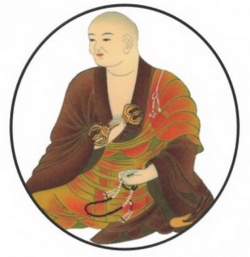Shingon Buddhism in Australia
Seizanji Temple is the representative of the Koyasan Shingon Buddhist Temple in Australia. It serves to provide instruction in Shingon Buddhism and meditation classes based on traditional esoteric practices handed down for over a thousand years.
The following introduction to Shingon Buddhism is from the Shingon Buddhist International Institute website:
"Shingon Buddhism is a religion that was established by Kôbô Daishi (Kûkai) at the beginning of the Heian period (9th century), and its teachings are known as Shingon Esoteric Buddhism (Shingon Buddhism).
This form of Buddhism is also known in Japanese as mikkyô, meaning "secret teaching". Mikkyô is one of several streams of practice within the Mahâyana Buddhist tradition. Mikkyô blends many doctrines, philosophies, deities, religious rituals, and meditation techniques from a wide variety of sources. Assimilation of Hindu and local deities and rituals was especially marked in the Buddhism that became Mikkyô. Such diverse elements came together over time and, combining with Mahâyåna philosophical teachings, formed a comprehensive Buddhist system of doctrine and practice.
The teachings of Shingon are based on the Mahâvairocana Sutra (J: Dainichi-kyô) and the Vajrasekhara sutra (J: Kongôchô-kyô) , the fundamental sutras of Shingon. These sutras were probably written during the last half of the seventh century in India. They contain the first systematic presentation of Mikkyô doctrine and practice.
Shingon represents the middle period of esoteric Buddhist development in India. This, extending from the seventh into the eighth century, was the time when the Mahâvairocana Sutra and Vajra Sekhara Sutra were compiled. Esoteric Buddhist history was practiced from India to Central Asia, Ceylon, China, Korea, Japan, Mongolia, Nepal, Indonesia, Southeast Asia, and Tibet. The Mikkyô tradition continues in Japan today, but in other lands where the Indian source tradition developed in varying ways, the esoteric Buddhist teachings have mostly declined, some to the point of extinction."
